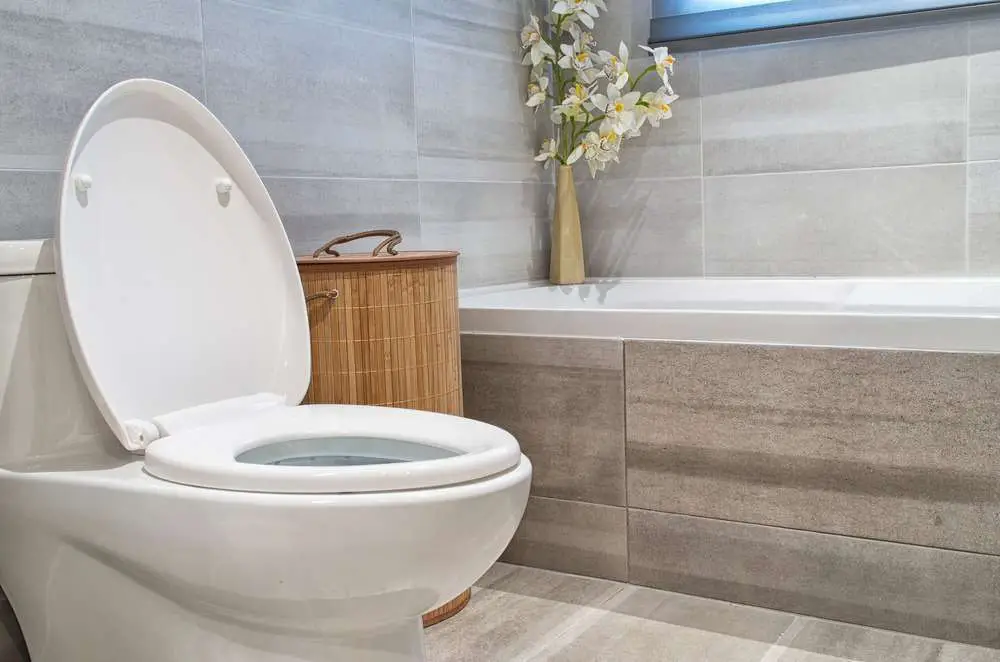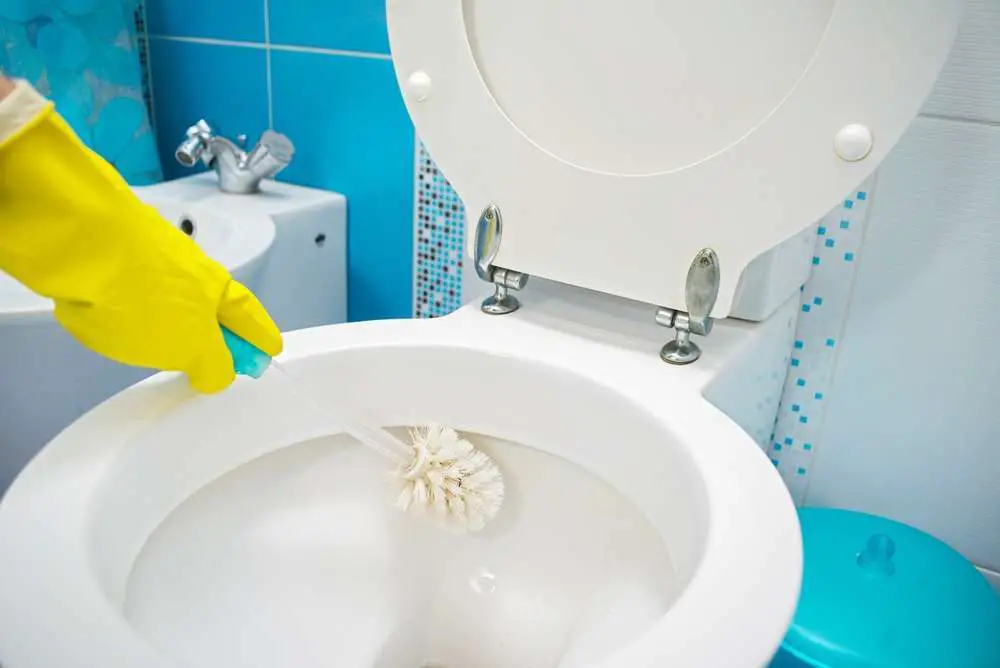- You are here:
- Home »
- Blog »
- Mold Advice »
- How Often Should You Clean the Toilet Bowl and How?
How Often Should You Clean the Toilet Bowl and How?

The toilet bowl is home to millions of bacteria. Yet, sometimes homeowners still go on to neglect it, letting dirt and bacteria flourish in it. Little do they know that their negligence can result in the toilet developing mold and exposure to bacteria and illnesses for anyone that uses the unclean toilet. Which probably makes you wonder, how often should you clean the toilet bowl to ensure it is safe to use?
Clean the toilet bowl at least once a week. Use a sturdy brush with a strong cleaner to ensure you clean it thoroughly. Doing so will kill bacteria, and prevent stains and mold. The cleaning process is simple and will take only a few minutes. So, we don’t see why anyone would want to skip it and risk the dangers that come with a dirty toilet.
We break down the risks associated with a dirty toilet and how you can clean it.
Table of contents
How dirty does a toilet bowl get?
The toilet is one of the dirtiest places in a home. After all, it is where you release your body’s waste. It is home to dirt and tons of bacteria. Studies by microbiologists revealed that there may be up to 50 bacteria per square inch of a toilet.
The bacteria festers and spreads when you neglect the toilet. This leads to the toilet developing layers of dirt, mold formation, and other harmful bacteria. Regularly cleaning your toilet bowl is vital to ensure a safe trip to the bathroom.
What are the dangers of a dirty toilet bowl?
Unclean toilet bowls are home to bacteria that can lead to illnesses. For example, E. coli and Staphylococcus are common bacteria found in human waste. They can transfer from the waste to the toilet bowl and then on to infect someone.
E. Coli is a bacteria in the intestine which can cause abdominal pain, diarrhea, and nausea. Staphylococcus is found on the human skin and can result in an infection once it enters the body.
Dirty toilets also develop black mold. While mold is not deadly, it releases toxins that result in the following:
- Itchy nose and or eyes
- Coughing and sneezing
- Fatigue
- Fever
You may experience shortness of breath and chest tightness in severe cases of mold exposure.
A dirty toilet is quite harmful. So, you need to regularly clean your toilet to avoid exposure to bacteria from it.
How to clean your toilet bowl

Let’s now look at the basics of cleaning your toilet bowl. We highlight everything from the time taken to the deep cleaning process. So, you can stay clear of the dangers in your toilet bowl such as bacteria and mold.
How long does it take to clean the toilet bowl?
Two factors determine the time it takes to clean a toilet bowl. The time taken depends on the amount of dirt, stains on the bowl, and the cleaning product used. Some products are more effective than others.
For homeowners that regularly clean their toilet bowls, the cleaning process will be quick. It should take around 5 – 10 minutes. Dirtier toilets take longer. You can expect to spend 15 – 20 minutes because there will be additional steps to the process.
The importance of a toilet brush
For the cleaning process, there are certain supplies you will need. On the very top of the list is a good toilet brush. The brush determines the thoroughness of the whole process.
Look for a sturdy brush with tough bristles that can dislodge dirt and stains. We also recommend looking at options with a grip and a replaceable head.
Besides a toilet brush, you will need a strong cleaner. For heavy-duty stain removal, we recommend getting a cleaner with bleach. The bleach works actively to remove dirt, and stains, and kills bacteria.
Steps to Deep clean a stained toilet bowl
Before you start, put on some gloves to protect your hands and arms from chemicals from the cleaner, dirt, and bacteria. You may also want to consider using goggles, to protect your eyes.
- Start the process by removing things from around the toilet. Cleaning a toilet can get messy, you don’t want debris of dirt or stain settling on other items in the bathroom.
- Flush the toilet once, keeping the lid down. Apply the cleaner to the toilet bowl. Make sure to apply close to the toilet rim, so it trickles down and covers most of the toilet bowl.
- Leave the cleaner in the bowl for a minute or two.
- While the cleaner settles, use an all-purpose spray to clean the exterior of the toilet. Spray it on and wipe it down with a washcloth.
- Now, move on to spraying the toilet seat and wipe it down also.
- Using the toilet brush, scrub the toilet bowl. Make sure you cover every inch of it and get inside the rim.
- Flush the toilet.
Your toilet should be clean. If the stain remains, you will have to repeat steps 2 to 7 again. The second go-around should completely get rid of all the stains.
Remove limescale from a toilet using a natural cleaner
Limescale is common in items that come in contact with water. It is a chalky substance made up of minerals that stain the toilet. You can typically get rid of it when you clean the toilet with a strong cleaning product.
However, for homeowners that want to use a natural solution, you can use vinegar instead of the cleaning product. Vinegar has natural cleansing power penetrating the limescale to break it down.
Final thoughts
Cleaning the toilet should be part of your weekly house cleaning routine. This way, you prevent the buildup of dirt, bacteria, and stains. So, you protect yourself and your family from exposure to bacteria and ensure the toilet doesn’t develop mold. After all, the cleaning process will only take a few minutes out of your daily routine.
About the Author Belal
Belal Rizvi enjoys writing about home improvement and do-it-yourself projects. He is an avid learner of the mold removal and dehumidifiers industry and provides insightful information about it to the readers.
